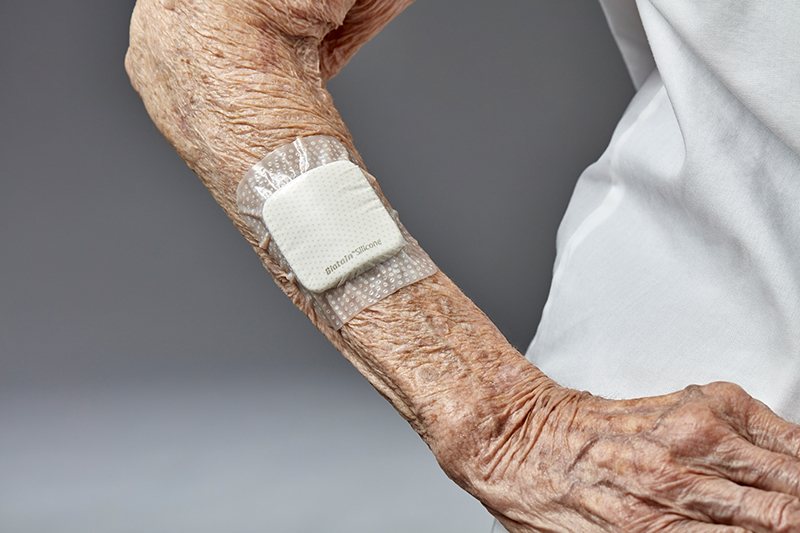How to manage the gap
In this section, you’ll learn:
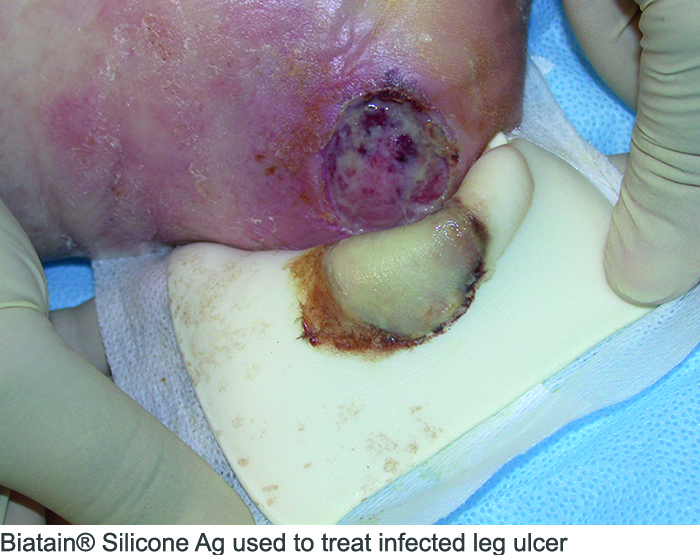
- provide a moist wound healing environment;
- remove pools of exudate from the wound bed;
- keep exudate from leaking on to periwound skin;
- reduce the risk of biofilm development; and
- reduce the risk of infection.
The dressing you choose is key to achieving these goals.
Choose the right wound dressing
Researchshows that the best way to ensure an optimal healing environment is to choose the right dressing. An effective dressing should conform to the wound bed, closing the gap between the wound and the dressing.2 It should also able to absorb exudate quickly and keep it within the dressing, so as to prevent any exudate from leaking on to the surrounding skin.
When you look at a dressing’s ability to absorb, make sure it can absorb liquid when in a vertical position. And, while you want the dressing to stay in place, it should still be easy to remove.1, 3, 4
What to look for in a dressing
An effective dressing should: 1
- conform to the wound bed;
- have antimicrobial properties;
- absorb excess exudate from the wound bed;
- protect the wound edges and periwound skin; and
- maintain a moist healing environment.
- be comfortable and cost-effective
- be easy for the patient to remove and care for
When to change the dressing and what to look for
Aswe discussed in the previous section on assessing the gap, you should complete a full assessment of a patient’s chronic wound at least once a week. At each assessment you will typically also change the dressing.
When changing the dressing, you should:1
- measure the wound’s depth, width and length;
- assess the wound for any signs of infection;
- assess the wound’s exudate (the amount, colour, odour and consistency); and
- assess if the current dressing is meeting the clinical goals you have for the patient.
You should examine the dressing twice, before and after you remove it. This will tell you how the dressing is performing, and it will help you examine the exudate.2
If you suspect that an infection has developed, you should consider using a dressing with antimicrobial components, such as silver.4
And always remember, effective wound management is about more than the wound. So, when meeting with your patient to change the dressing and check on the wound you should also assess their general health and wellbeing.
Likely findings when reassessing the wound dressing
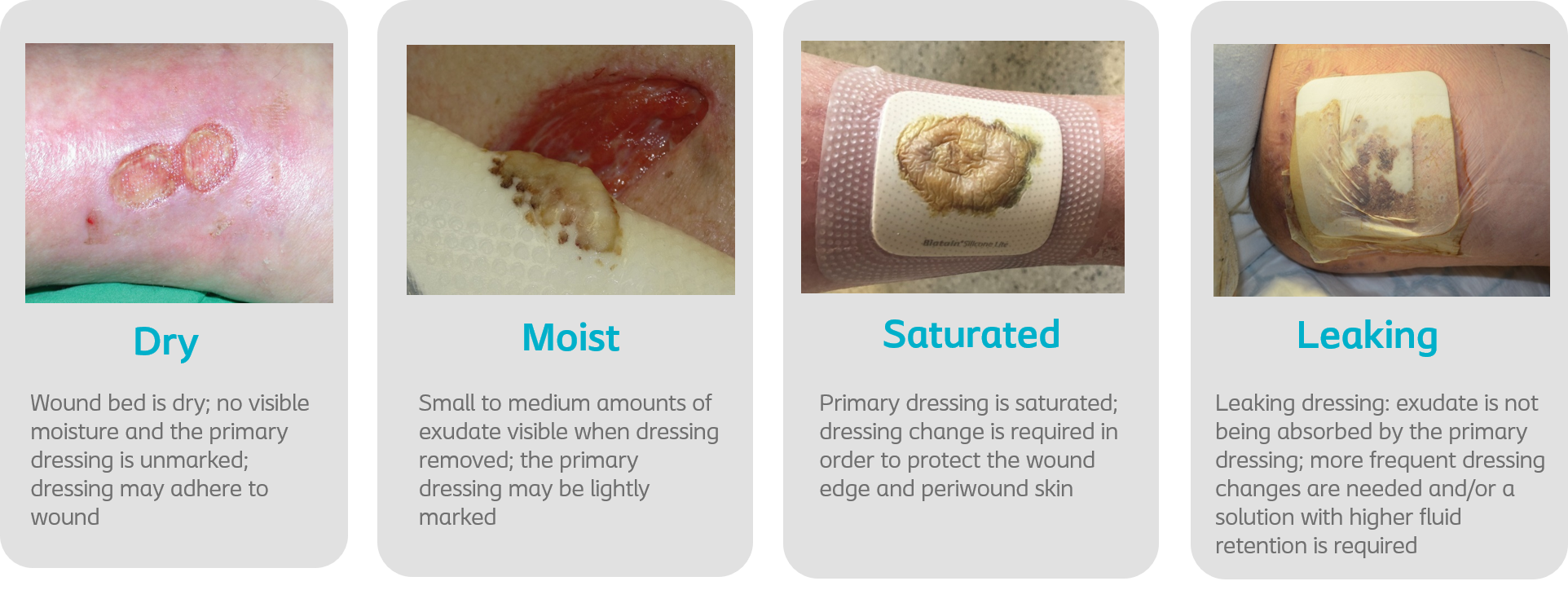
References
- Keast, David H. et al. Managing the gap to promote healing in chronic wounds – an international consensus. Wounds International 2020. Vol 11, issue 3
- World Union of Wound Healing Societies (WUWHS) Consensus Document. Wound exudate: effective assessment and management. Wounds International, 2019
- Dowsett et al. (2020). Closing the gap between the evidence and clinical practice – a consensus report on exudate management (11(3)) (def. exudate pooling)
- Adderly, U.J (2010) Managing wound exudate and promoting healing
You may also be interested in…
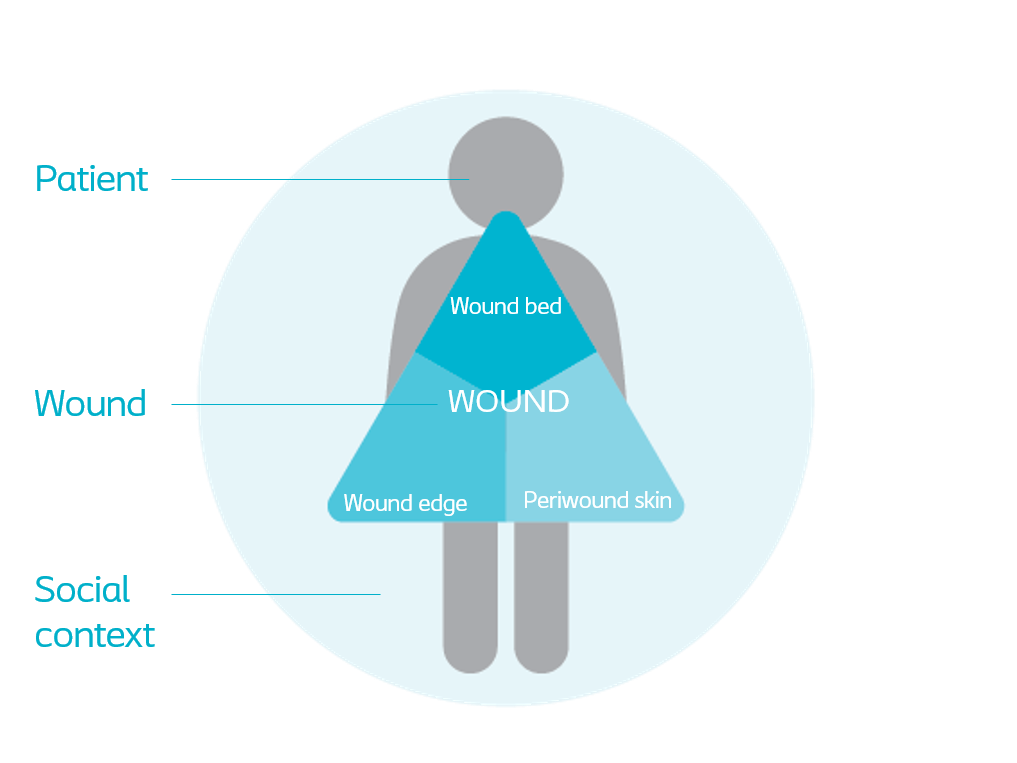
HEAL e-learning
Learn about holistic and systematic wound assessment and management with this EWMA-endorsed course.
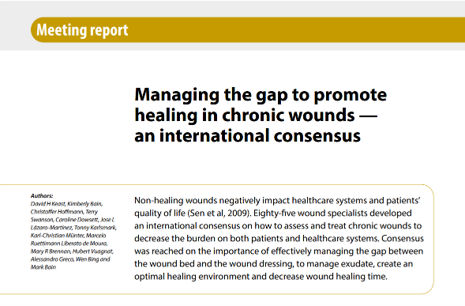
Managing the gap
Learn about the international consensus that was reached on managing the gap between the wound bed and the dressing.
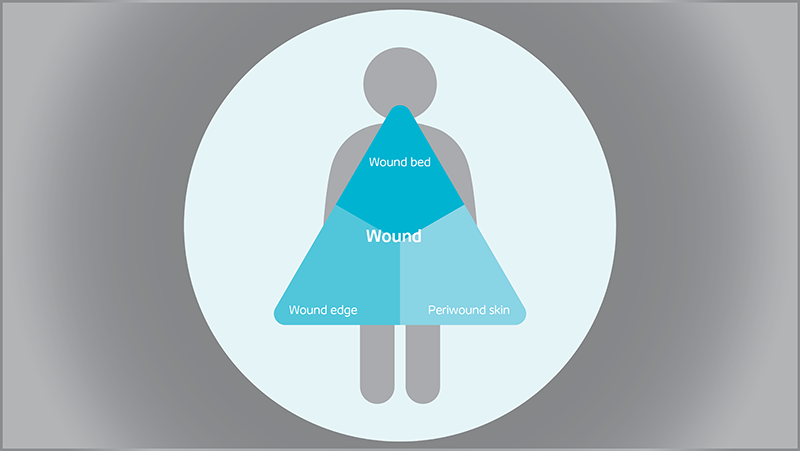
Triangle of Wound Assessment
Conduct a holistic and systematic wound assessment with our tool.

